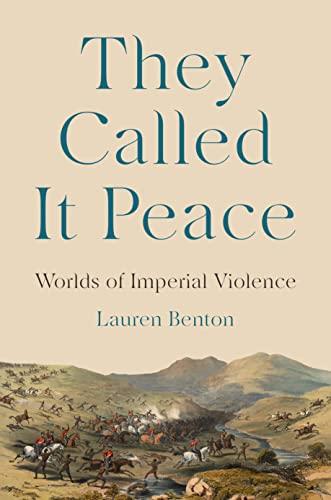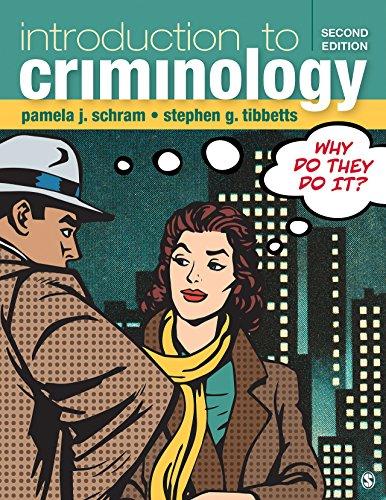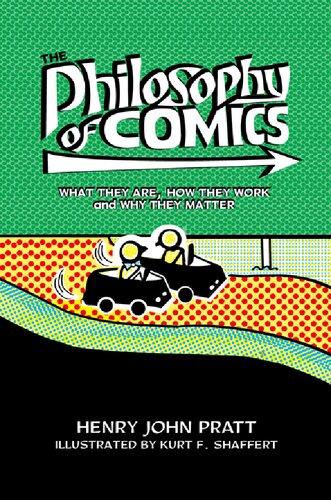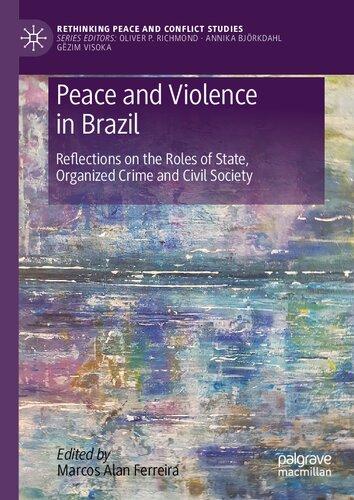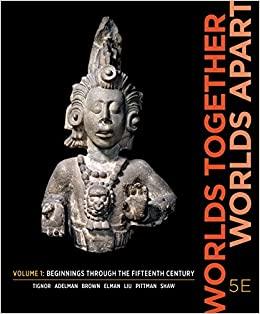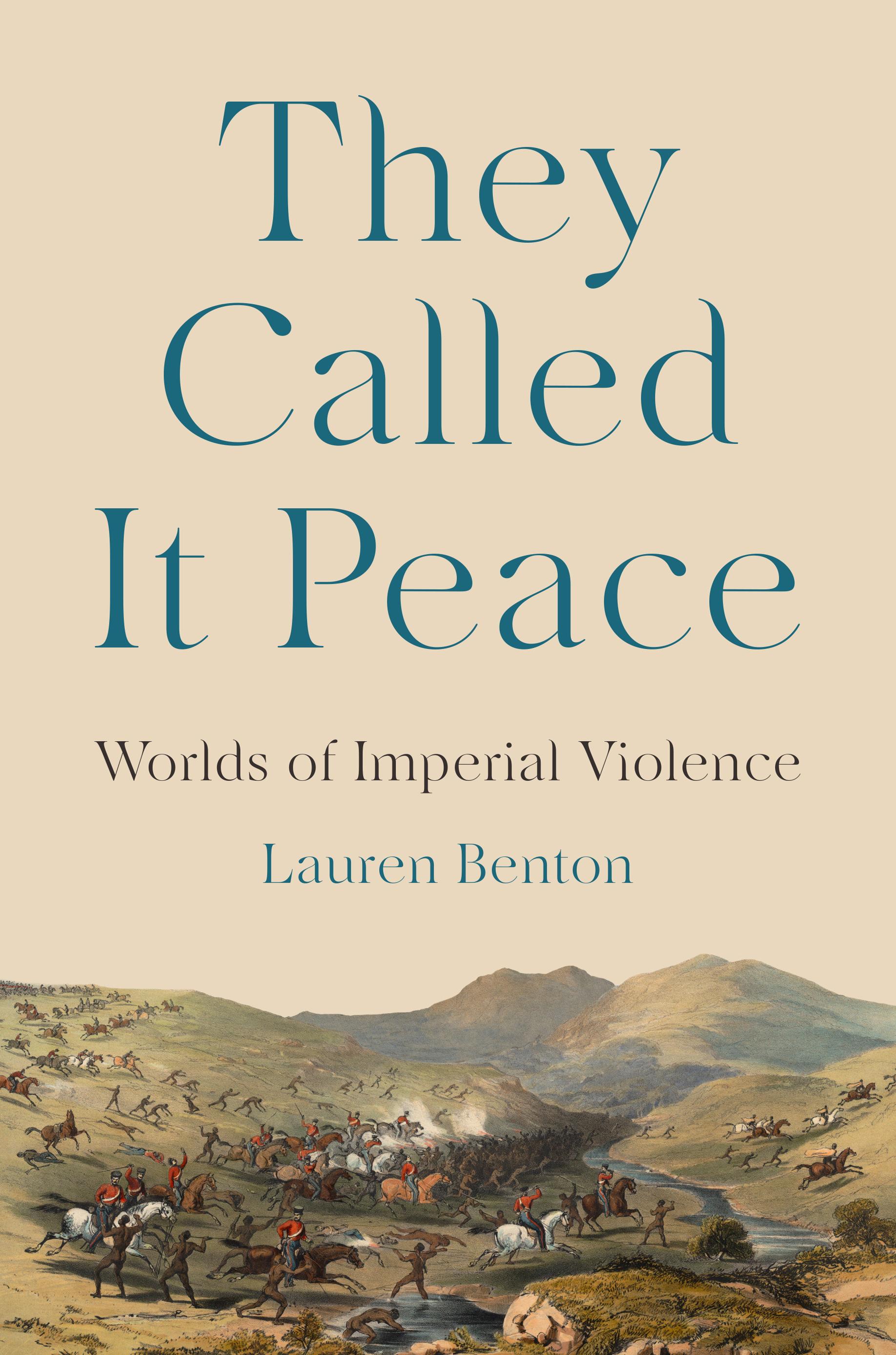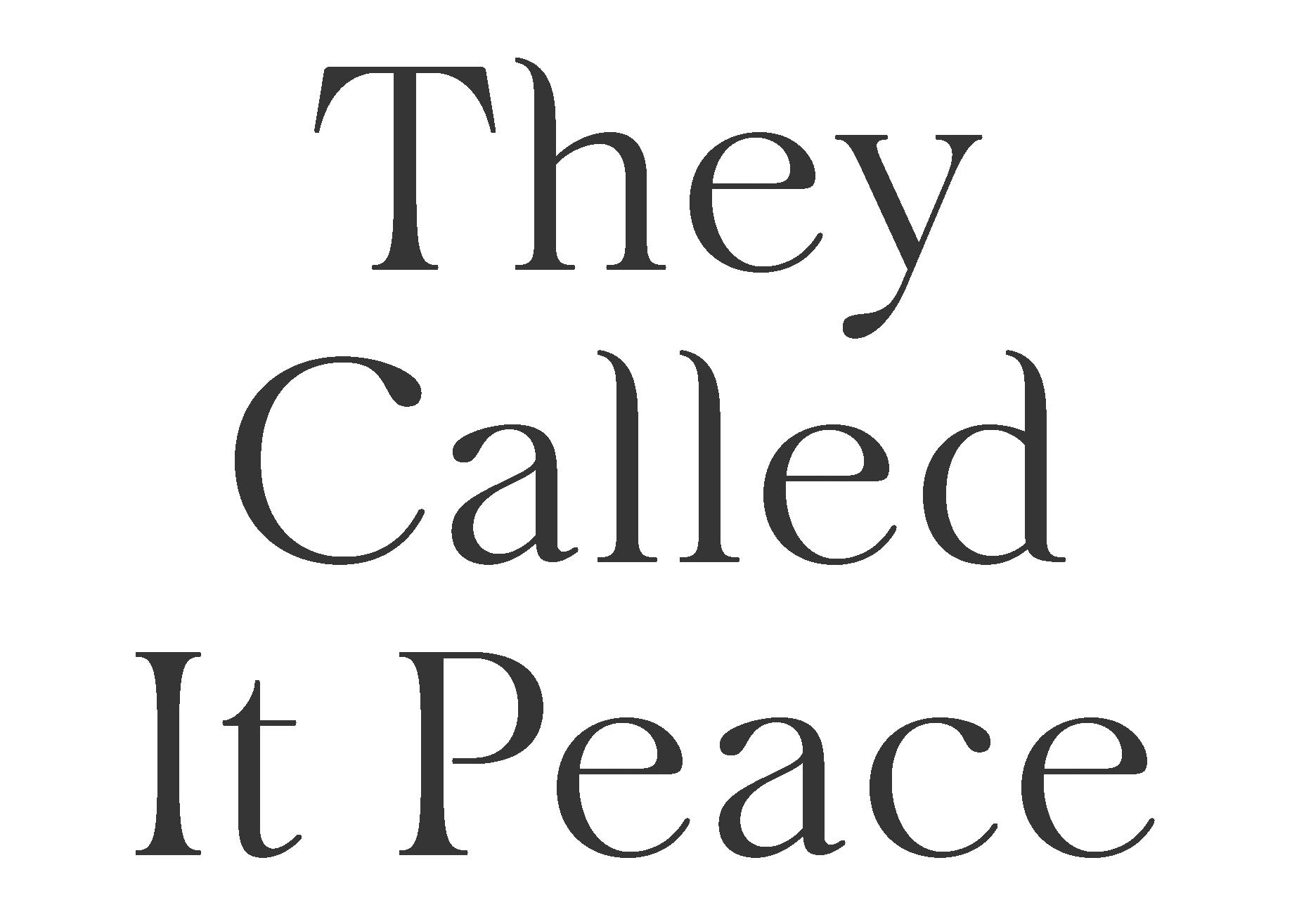Worlds of Imperial Violence
Lauren Benton
prince ton university press
prince ton & oxford
Copyright © 2024 by Lauren Benton
Princeton University Press is committed to the protection of copyright and the intellectual property our authors entrust to us. Copyright promotes the progress and integrity of knowledge. Thank you for supporting free speech and the global exchange of ideas by purchasing an authorized edition of this book. If you wish to reproduce or distribute any part of it in any form, please obtain permission.
Requests for permission to reproduce material from this work should be sent to permissions@press princeton edu
Published by Princeton University Press 41 William Street, Princeton, New Jersey 08540 99 Banbury Road, Oxford OX2 6JX
press princeton edu
All Rights Reserved
ISBN 978-0-691-24847-9
ISBN (e-book) 978-0-691-24848-6
Library of Congress Control Number: 2023945233
British Library Cataloging-in-Publication Data is available
Editorial: Priya Nelson, Emma Wagh, and Morgan Spehar
Production Editorial: Karen Carter
Text Design: Karl Spurzem
Jacket/Cover Design: Katie Osborne
Production: Danielle Amatucci
Publicity: Carmen Jimenez and Maria Whelan
Copyeditor: Jennifer Harris
Jacket/Cover Credit: Jacket image: Charge on the Gwanga, Cape of Good Hope, on the 8th June, 1846 by Harry Francis Colville Darrell (1851). Prints, Drawings and Watercolors from the Anne S. K. Brown Military Collection. Brown Digital Repository / Brown University Library
This book has been composed in Arno Pro Printed on acid-free paper. ∞
Printed in the United States of America
10 9 8 7 6 5 4 3 2 1
To ravage, to slaughter, to usurp under false titles, they call empire; and where they make a desert, they call it peace.
tacitus, agricola
We will go to war, but not really, because we don’t want to and aren’t allowed to, so what we’re doing is in fact some kind of hyper-violent peace in which people will die.
nick harkaway, the gone- away world
2.1. Skirmish to recover cattle stolen in a raid, Diebold Schilling the Younger, Lucerne Chronicle, 1513. 30
2.2. Muhammad I of Granada leading the Mudéjar Revolt of 1264–1266. 40
2.3. Detail from “The Wolf of Gubbio,” Stefano de Giovanni (“Sassetta”), ca. 1437–1444. 43
2.4. The massacre at Mystic, 1637. 52
3.1. Francisco Suárez (1548–1617). 66
3.2. Portuguese Fortress of Baçaim (Vasai), ca. 1650. 77
3.3. Map of English Jamaica, 1671. 89
4.1. Map of Coromandel Coast, mid-eighteenth century. 107
4.2. Portrait of Muhammad Ali Khan (1717–1795). 109
4.3. Map of territories in the R ío de la Plata exchanged in the 1750 Treaty of Madrid. 123
5.1. Map of Pacific Coast of North America, early nineteenth century. 158
5.2. Governor George Arthur’s Proclamation to the Aborigines of Tasmania, ca. 1828–1830. 173
In a speech on the Vietnam War in September 1967, President Lyndon Johnson listed reasons the United States should stay the course in the increasingly unpopular war. Among them was the claim that limited violence would prevent catastrophic violence, perhaps even nuclear war. The administration promised measured escalation. But by the end of that year, half a million American troops were in Southeast Asia, and the scope of death and destruction had erased any notion that the war could be a vehicle for peace.
I came of age in the United States during the Vietnam War. Like so many others in my generation, I thought the war was an abomination—a deep tragedy, in fact. Yet at the time I was also painfully aware of how little I knew about Vietnam and its history, and how impoverished our knowledge was about U.S. and European imperialism. I had only vague ideas about how to critique the claim that distant wars might be contained—or bent to some higher purpose.
By the time, years later, I began to study the history of European empires, I was working alongside many other historians striving to deepen our understanding of the imperial past. As I write these lines, I am surrounded by piles of recent books with “empire” in their titles. They analyze the halting origins of European global power and the troubled workings of imperial rule. They characterize the United States as an empire- state in the mold of European empires. They map a world of repression, while also documenting rebellion, persisting Indigenous sovereignty, and pluralism. Still, some of the puzzles of my youth endure. Small wars continue to multiply around the world, many echoing the logic and language of imperial violence. Governments still assert that waging limited war is both pos si ble and necessary. And
justifications for violence not classed as war remain both opaque and consequential.
This book places imperial small wars at the center of a new history of global order. It shows, first, how societies across the world embraced raiding and captive taking. Beginning in the fifteenth century, European empires mobilized these ancient practices on a novel scale. Conflicts in and on the edges of empires composed a global regime of plunder. Growing inequalities of power gave rise to new frameworks for violence in the eighteenth and nineteenth centuries. As Europeans asserted the right to set the laws of war and intervene anywhere to protect imperial subjects and interests, they assembled a sprawling regime of armed peace dominated by a handful of world powers.
As I traced these patterns, I was shocked by the frequency with which serial minor conflicts opened pathways to extreme violence. Wars that were billed as small and manageable exposed civilian populations to ferocious attacks by fighters suddenly released, it seemed, from any obligation to refrain from cruelty. Strategies that had appeared to enhance security just as often produced catastrophe. Like players in a game in which routine moves drop pieces to positions on the board where all is lost, participants in small wars were aware that utter devastation was a real possibility, but they could not prevent it. Empires and their agents, meanwhile, deftly combined pledges to check the ravages of war with authorization of spectacular violence.
In writing about this history, I had to reach for new ways of studying “small wars.” Military analysts have tended to describe small wars as manifestations of insurgency and counterinsurgency. The bias has driven them to focus on questions about how and why global powers so often failed in the face of unconventional enemies. Typical of this tendency is the minor industry in the United States that aimed at assessing why American officials made so many wrong moves in Vietnam. But schooling sponsors of war to learn lessons from the past so they might do a better job next time is an odd, even chilling, objective. It also answers the wrong questions. Our aim should not be to help humanity master the art of war but to understand the arc of war—the logic and practices that move antagonists with exquisite precision from conflict
to conflict, and from exercises in containment right up to the edge of atrocity.
If I couldn’t rely on military analysts as guides, I also needed to cultivate a healthy skepticism of some common approaches to law and war. Followers of the German jurist Carl Schmitt, who began to ponder war when he was an enthusiastic member of the Nazi Party, have focused on the relation of imperial violence to states of emergency or exception. The approach has opened new ways of mapping the dynamics of imperial violence, but it also misses a great deal. Although empires frequently deployed emergency measures like martial law to sanction and systematize violent repression, their baseline condition was low-level violence organized in routine sequences. This ongoing violence and its many forms gave emergencies their logic and rhythm—not the other way around. The phenomenon also naturalized extreme vio lence. The slaughter and enslavement of civilians, starvation of whole towns, and campaigns of dispossession— these and other brutal proj ects were integral parts of the global imperial order.
The age of empires is in many ways still with us. In the twentieth century, international treaties and institutions sought to ban war, and it is tempting either to portray the proliferation of small wars as a sign of international law’s failures or to regard parts of the world as descending into the unruly warfare of the premodern past. Instead, this book suggests many continuities in the mechanisms, justifications, and rhythms of war across global and international orders. When twentieth-century empire- states packaged their violence, for example, as an inside job—a work of policing, not war—they were drawing on an imperial repertoire. It is worth exposing such continuities rather than highlighting the novelty of contemporary puzzles about how to regulate and limit war.
Today’s warmongers resemble agents of empires when they claim that “small” violence is necessary to keep and produce order. They deploy imperial languages of protection and peacekeeping to justify undeclared wars in far places. And they echo imperial sponsors when they assert that it is possible to limit the suffering unleashed by war. To be able to follow the underlying logic of small wars in the present, we need
to understand the rhythms and rationales of imperial violence in the half millennium before the twentieth century.
It is fair to ask whether linking imperial violence to global order might shift attention away from the undisputed role of empires as engines of inequality and racism. The opposite is true. Imperial small wars deserve attention precisely because their histories help to illuminate the politics of difference and hierarchy, from racial exclusion to class and religious conflict. The analysis calls for care. The term “small wars” cannot be used or taken to reproduce the terms of European power by making Indigenous suffering seem like a minor phenomenon. The goal is emphatically not to support nostalgic champions of the greatness and civilizational gifts of past empires. The label “small wars” instead conveys something real and important about how imperial violence was organized—its staccato rhythm and its ad hoc justifications. The term reflects the insight that empires specialized in violence at the threshold of war and peace.
The suffering inflicted in imperial small wars was, of course, never truly small. Death in a skirmish or a desperate run to safety from a sharp, brief war was no less tragic for victims than losses in the context of major wars. It was also no great consolation to people caught up in wars to know about efforts to contain conflict. Yet writing the history of smallscale violence in all its forms recognizes the widespread preoccupation in the early modern world with defining violence between war and peace. The search occupied famous jurists and theologians, as well as obscure authors of diaries, logbooks, petitions, and reports. Unlettered warriors and captives also had their say. We would be hiding vital parts of history if we ignored the experiences of participants in small wars in empires and the swirling commentary, at all levels of society, about them.
Connections between the world of powerful European empires and the global order of the twenty-first century were very present as I was writing this book. Evidence of the imperial past swirled in news from global hot spots, and at home. In December 2021, the release of a cache of secret U.S. government documents about tactics in the “war on terror” revealed shockingly routine civilian killings in a program of socalled targeted strikes. On everyone’s mind in reading those reports was the awful footage of the previous summer, when a drone had rained
death on a Kabul driveway packed with children. Then in February 2022, Russia invaded Ukraine. Russian president Vladimir Putin drew on an imperial script to defend the invasion. He insisted for nearly a year on calling the war a “special military operation,” as if its purpose was to discipline a recalcitrant region of greater Russia rather than to absorb another nation-state. News from Ukraine, meanwhile, pushed reports about another deadly conflict, the Tigray War in Ethiopia, out of the news cycle. By the time a truce was signed in November 2022, nearly half a million people had died in the fighting there, yet the war was coded as small and faded quickly from public view outside the region. War was everywhere, and it was everywhere echoing imperial themes and testing the contours—and the very idea—of global order.
Other conflicts will grab headlines and test our capacity to define violence between war and peace. Histories of imperial violence help to explain a persistent preoccupation with limited war and the strangeness of perpetrators of war crimes claiming the mantle of peacemakers. Writing this book has helped me, more than I imagined it would, to think critically about war in my own time. It has returned me, too, to the problems I pondered in my youth: what accounts for per sistent magical thinking about supposedly limited war as a rough equivalent to peace and what explains the ease with which we minimize faraway wars and their effects by making them appear small.
The history that I tell here shows that we have long possessed a high tolerance for violence between war and peace. Perhaps something more radical is needed, like a genuine movement to banish violence in all its forms. The question is not just whether such pacifism is politically possible but whether it would render us helpless in the face of bloodthirsty regimes and overt acts of aggression. This is an old and familiar tension. It reminds us that history might not serve as any sort of useful guide for action. We can hope, at least, that the politics of the past can teach us by analogy about the politics of the present. At the very least, a global history of imperial violence warns us to temper our expectations about humanity’s capacity to keep small wars small. It might also allow us to see the trapdoors to atrocity before we fall.
They Called It Peace
From Small Wars to Atrocity in Empires
A shopkeeper named Bremner in the region now known as the Eastern Cape of South Africa informed British troops in April 1847 that Xhosa men had stolen four of his horses. The lieutenant colonel of the local British regiment credited rumors that the raiders had taken the horses to a nearby kraal, a settlement and livestock enclosure controlled by a Xhosa group friendly to the British. Thirty cavalry and thirty infantrymen descended on the kraal in an unruly raid. The soldiers seized 155 cattle, killed a Xhosa man who refused to come out of his hut, and carried away two other Xhosa men as prisoners. The troops also captured four horses. They were not Bremner’s horses.1
The small raid was part of a conflict that the British labeled the War of the Axe, so called because its immediate catalyst was an attack on soldiers escorting a Xhosa man to Grahamstown to be put on trial for stealing an axe. On the surface, there was little to distinguish this short war from the previous six frontier wars, or for that matter from the interlude of peace that immediately preceded it. Small- scale violence in the form of disjointed campaigns of marauding, cattle theft, and crop destruction had been business as usual in the region since at least 1779, when Xhosa outrage erupted over settler cattle stealing. In the decade before the War of the Axe, Xhosa chiefs decried settlers’ systematic campaign to strip them of power and take away their land, while Dutchdescended and British settlers complained of Xhosa “outrages, so
incessant and atrocious in their details as to surpass belief.” The violent peace transitioned into a war of many fronts, and at times no front at all. Unstable alliances strained under mutual accusations of betrayal. When the War of the Axe officially ended, violence lingered, and soon two more frontier wars acquired the name, preparing the way for another series of wars, the Anglo-Zulu wars that began in 1878.2
These discretely labeled wars were part of a single, long- lasting conflict over territory, labor, and authority in the shatter zone of nineteenth- century southern Africa. The serial wars summed to violent dispossession of Africans, who regrouped again and again to resist settler incursions and strike back. This long phase of violence—more than a century of chronic warfare—resembled other arenas of frontier violence in which settler land grabs resolved into colonial state making. Yet we should resist the temptation to view the conflicts as a process trending toward nation-state formation or to suppose that the violence unfolded beyond the reach of law.3
There is more to the multiplicity of imperial small wars than first meets the eye. As they assembled repeating patterns of violence and peacemaking spanning polities and regions, small wars connected European justifications for imperial violence to wider—indeed global— proj ects aimed at defining limited war and allowing it to flourish. Repeatedly, the course of imperial small wars showed how grinding conflicts in the shadow of empires could suddenly, seamlessly, produce the worst kinds of unfettered violence. The repetition of these patterns inserted the logic of chronic violence into the heart of the global order. Hannah Arendt described warfare as “from time immemorial the final merciless arbiter in international disputes.”4 Her words reflect a familiar story about humanity’s long, gradual project to condemn and contain interstate violence. Eventually, according to that story, efforts to produce perpetual peace prefaced a twentieth-century diplomatic push to outlaw war by treaty and authorize international institutions to act to prevent it. Analyzed as residual violence seeping around barriers to war, serial small and “endless” wars of the late-twentieth and twenty-first centuries appear to result directly from nations’ attempts to evade or change the contours of international regulation. From this perspective, the small wars that
continue to plague the world seem to represent a return to the unfettered, extrajudicial violence of the age of empires.5
This book tells a different story. I show that serial small wars were endemic to the early modern world and I trace their evolution. The first of three interconnected arguments is that patterns of imperial violence composed truly global regimes. Despite variations in the way societies justified and regulated violence in different regions, imperial small wars followed similar rhythms and routines. Small- scale, chronic violence not only ticked along inside orderly mechanisms of an increasingly intercommunicating world. It also served to structure relations across religious, cultural, and political divides.
Second, I track how imperial small wars produced conditions for outbreaks of atrocity. For centuries, massacres and slaving were classed as lawful and just treatment of enemies who refused to submit. Aggressors represented their victims as peacebreakers or rebels, whether or not those designations matched reality. Widely shared practices of plunder were foundational to conquest and to empires’ waxing power. Increasingly, as empires responded to proliferating calls to protect subjects and interests around the world, they authorized agents far from home to make decisions about when to engage in local violence, and in what measure. In the long nineteenth century, armed intervention was defined as a European right. Imperial sponsors and agents repurposed old arguments about preemptive defense and just reprisal to legitimize brutal campaigns of dispossession and extermination.6
Third, I show that Indigenous communities were integral to the regulation of violence. Conversant in arguments about the justice of war, they maneuvered to establish their right to go to war. And because the logic of violence was legible to all, Europeans and Indigenous people in empires deployed similar strategies. They alternated between representing violence as internal, akin to repression or policing, and external, a matter of war. At times parties claimed political autonomy and the capacity to fight as enemies, and at times they affirmed their status as subjects bargaining for protection. They manipulated markers of political belonging, in other words, and cultivated ambiguity about whether conflicts were wars or something else. Like their European
interlocutors, Indigenous communities found reason to position violence at the threshold of war and peace.
These arguments run against some common ways of characterizing imperial violence. One familiar approach is to highlight the violent effects of deep, systemic clashes—of religious communities, civilizations, ideological orders, and economic systems. Another presents European empires as overpowering other peoples from the moment of first encounter and then quickly perfecting dominance. Meanwhile, a great deal of ink has been spilled on major wars and famous battles, and on changes in battlefield tactics, the rise of professional armies, the development of weaponry, and the relation of warfare to grand strategy. Some pitched battles did settle disputes or turn the tide of longer conflicts, and there is no doubt that religious difference and technological capacity influenced the progress and outcomes of war. Yet there is value in turning our attention to other varieties of warfare and to the framework that sustained small, chronic, and repeating violence.7
The reorientation should not keep us from seeing that imperial small wars produced lopsided suffering and consequential shifts in power. We know that some small wars—King Philip’s War in colonial New England is one example—marked turning points in longer campaigns of conquest and colonization. We know, too, that the vast system of enslavement of millions in the Atlantic world was predicated on something very much like a permanent state of war between enslaved men and women and their enslavers. And we know that the imperatives of maintaining order— the “king’s peace,” as it was called in the British Empire— reverberated through colonies and served to justify violent oppression. As imperial small wars multiplied, they gave rise to new institutional gambits and experiments in revolution, reform, and repression.8
Far from arguing against these positions, I am building on them to point to the still broader effects of serial small wars. Many of the effects carry into the present. Together, the continuities belie the usefulness of familiar watchwords of international politics now and in the past century, from “asymmetric war” to “endless war” to “humanitarian intervention.” From campaigns of targeted killing in the “war on terror” to proxy wars or cross-border interventions and invasions, echoes of the
age of empires are everywhere. The threat of minor wars with cataclysmic possibilities has formed the background to domestic politics in nationstates while also hanging like the sword of Damocles over international affairs.9 The imperial roots of the phenomenon come into sharp relief as we trace the global history of small wars in the five centuries between 1400 and 1900. Warriors and their sponsors, as well as political thinkers and anti-imperial advocates, grappled with a shared puzzle: how to define and structure violence at the threshold of war and peace.
On Small Wars
It is difficult to write about war of any kind without starting with Carl von Clausewitz, the Prussian general and military analyst best known for his widely translated and read book, On War. 10 Clausewitz focused mainly on major, formally declared conflicts and warfare in Europe. To the extent that he examined small wars, Clausewitz defined them as involving small detachments of irregular troops and regarded them as ancillary to, or integral parts of, larger conflicts.11 Followers of Clausewitz emphasized tactics rather than strategy or deeper structural characteristics of small wars. They also studied small wars to provide advice to states and armies about how to respond effectively to insurrections and guerrilla campaigns.12 Under the rubric of “asymmetric warfare,” analysis of small wars in this vein continues to the present.13
In making distinctions between the orderliness of conventional wars and the relative looseness and improvisation of small wars, Clausewitz advanced a view of minor conflicts as chaotic, unpredictable, and exceptional. He imagined at least one kind of small war, popular uprisings, as emanating from political forces or entities other than the state. In doing so, he associated small wars with, as he put it, “the breaching of old artificial barriers.”14 For Clausewitz, fighting small wars in opposition to the state tracked a tendency among non-state actors to embrace primordial violence.15 A corollary of this perspective was the view that small wars and conduct in them operated beyond the purview of the laws of war—in something like a separate realm in which conventional attitudes and routines did not hold.
That position intersected with another: the idea that the extraEuropean world occupied its own juridical space. Clausewitz referenced the distinction when he identified Spanish guerrillas resisting Napoleon’s invasion in 1808 as the paradigmatic example of a small war. Extolling the fierceness of Spanish irregulars taking on the better-equipped French army was a subtle way for Clausewitz to critique Prussians’ less dogged opposition to Napoleon’s forces. But the position carried other significance. To call Spanish resistance the “first” guerrilla war was to adopt a studied ignorance of warfare beyond Europe. It meant writing out of history the armed opposition of local fighters to European imperial forces before the nineteenth century.
Writing about small wars in 1906, the British military officer-turnedwriter C. E. Callwell seemed to solve this problem by associating the same definition of small wars—conflicts involving regular armies fighting irregular forces—with violence in the British Empire. For Callwell, campaigns of conquest and annexation, suppression of insurrections, acts of retaliation, and interventions in non-European polities to unseat dangerous enemies—these and other colonial conflicts qualified as small wars.16 Callwell’s account also pitted an empire rooted in morality against an external realm of supposedly lawless actors.17 It repeated the old story of European force on the side of law and resistance as the origin of chaos.
In the twentieth century, the story of a sharp separation of European and extra-European warfare received endorsement from the German jurist Carl Schmitt. Writing as a member of the Nazi Party during World War II, Schmitt made the distinction a key organizing principle of global spatial order. According to Schmitt, the first global spatial order lasted for four centuries and divided the world into the “pacified order” of Europe and the “quarrelsome disorder” of extra-European space.18 In Schmitt’s view, the European legal order placed annihilating war outside its bounds, in lawless, extra-European spaces.19
Like Clausewitz, Schmitt regarded the Spanish irregulars resisting French rule as the first guerrilla warriors. Yet unlike Clausewitz, Schmitt was writing past the midpoint of the twentieth century and knew he had to find a way to explain increasingly strong and organized anti-imperial strug gles. He did so by characterizing them as otherworldly events
spawned by the marriage of guerrilla tactics and the lawlessness of the extra-European world. Anti-imperial fighters were “unmoored” from the forces containing war in Europe. 20 Once again, warfare beyond Europe made sense only as a deviation from practices in Europe. The irony of Schmitt, as an unapologetic servant of the Third Reich, relegating uncontrolled violence to spaces outside Europe is difficult to miss.
Particularly given the limited historical vantage points and the ideological biases of Clausewitz, Callwell, and Schmitt on small wars, we should reject the automatic association of small wars and guerrilla insurgency. The idea that small wars involved nimble, irregular fighting units arrayed against larger, state-sponsored armies flows, after all, from analytical choice (and the fixation on Spanish irregulars fighting the Napoleonic army) rather than broad or deep historical evidence. The category of “irregular” forces loses its meaning in eras when raids and counterraids dominated fighting on all sides. And later, when empires favored short strikes and empowered armed gangs of settlers to do their bidding, the term also makes an awkward fit with accounts of warfare. At different times and places, anyone might favor—or challenge—violence in the form of sharp, brief attacks. And even if combatants were labeled as stateless rogues or (more rarely) found advantage in representing themselves that way, they usually strained to maintain relations with legitimate sponsors and sought legal cover for their actions.21
For multiple reasons, then, it makes sense to define the category of small wars capaciously and flexibly. This book utilizes a broad definition of “small” imperial violence. The phenomenon encompasses raiding and other sporadic violence as well as conflicts that were small in scale, remained undeclared, or lasted for relatively brief periods. The “smallness” of many imperial wars is deceptive, of course, since they often repeated across long phases and extended over vast areas. Once we rid ourselves of the biases behind formulaic assumptions about conventional versus guerrilla warfare and shed ideologically charged representations of legal difference between Europe and the rest of the world, the value of a broad definition of small wars becomes obvious. It allows us to uncover prevalent patterns of violence and transcends fixed notions about small wars based on specific tactics or supposed lawlessness.22
The book will show that law, defined broadly, infused all forms of imperial violence.
Waves of imperial violence produced a messy assortment of names for war. I have decided, in part to recognize this confusion of labels, also to deploy a multiplicity of terms. I have kept the term “small wars,” and I will describe some cases where that term helps to make sense out of serial campaigns of violence. I will also refer, at times, to “private” and “peacetime” violence. And I will describe a hidden theory of “ limited war” comprising bits and pieces of European legal commentary. The phrase that works best to bundle these terms and phenomena is “violence at the threshold of war and peace.” That is a mouthful, so I use it only where I think it offers clarity. The multiplicity of terms is intentional and designed to recognize a problem shared by legal writers, imperial agents, and Indigenous political actors: how to characterize the legal space for violence between war and peace.
The category of “small wars” in this book thus includes named wars like the War of the Axe and short conflicts with no name. It encompasses sustained campaigns of violence organized around discrete episodes of fighting and brief acts of violence such as attacks described as motivated by plunder, reprisal, or punishment. Although I pay close attention to justifications for violence, I do not impose a typology of forms of violence according to the rationales or tactics of participants and sponsors of violence.23 Certain forms of violence, such as raiding, were more prevalent in some periods, but they also spanned centuries. Justifications for war arrived in clusters but also carried across eras and regions.24 It is only by bringing these phenomena together that we can expose the role of small wars in global politics and law.
We can be sure that small wars in empires have not failed to attract systematic study because we lack sources. The historical record brims with sharp complaints about the agony and injustice of these conflicts, including vivid descriptions of the shock they produced for people who struggled to go about their lives without imminent threat of getting robbed, injured, kidnapped, or killed but who were swept up nonetheless in vicious and unpredictable fighting. Jurists and theologians puzzled over the legalities of small wars—and did so rather more often and
at greater length than most historians have realized. Litigants also took notice. Although most plunder went unrecorded, some of it ended up as the subject of lawsuits that generated copious paper trails. Combat itself, whatever its rationales and legitimacy, inspired narratives by both victors and vanquished as they angled for political and economic reward and protection by power ful patrons or polities. Victims of raiding in every world region generated stories of captivity, and officials recorded truces, treaties, payments of tribute, and descriptions of gift ceremonies that reveal the machinations of peacemaking, security pacts, alliances, and other arrangements connected to repeating cycles of violence.
The record is so vast, in fact, that one can only proceed by focusing on select cases and themes. Rather than offering a comprehensive history of imperial small wars, I analyze exemplary conflicts in overseas European empires between 1400 and 1900 to reveal broader patterns. I have chosen to focus on small wars in regions that are typically less well integrated with global histories, especially Latin America and the Pacific world. That means that some other regions, including Africa and the Middle East, get short shrift. I include material from French and Portuguese empires but give special attention to conflicts in the Spanish and British empires. Some choices of wars to analyze were serendipitous; they came about when I found intriguing examples or followed promising sources. Others flowed directly from a desire to test or illustrate arguments about global violence. I do not always construct elaborate bridges from examples to generalizations, but the bridges are not figments of my imagination, either. The connecting sinews are made up of law—how people involved in violence thought about law, and how observers wrote about it in relation to violence.
The legal framework of small wars spans the realms that historians describe as theory and practice. I typically begin with conflicts in empires to show how the regulation of violence emerged partly from the actions and pronouncements of people far from Europe. Most histories of the laws of war start and stay in Europe and the United States, and they explain texts by analyzing the contexts in which they were made. The circle of context can be drawn tightly, for example, by focusing on a single writer, or it can be extended to encompass distant events and
trends.25 Here I take a different tack. Except in a few cases, I do not map the circulation of information or ideas between Europe and other regions. I instead enlarge the production of theories about law and war to include the whole world. At the same time, I analyze European writing on war and juxtapose it to histories of small wars. These moves break down the often implicit, artificial separation of theory (located in Europe) and practice (in events unfolding in or beyond empires). People in very different positions inside and outside Europe were grappling with similar problems of how to justify and regulate violence. We can think of my method as an exercise in refraction. It is like holding two objects next to each other to view each one in the reflected light of the other. I use imperial small wars as a prism focusing light on overlooked corners of European writings on war, and I look to European texts to illuminate more diffuse approaches to violence at the threshold of war and peace.
Strange Violence, Big Law
In 1504, a Dutchman penned an account of his voyage as a crew member on Vasco da Gama’s second expedition into the Indian Ocean. At Calicut (Kozhikode) on the western coast of India, the Portuguese ships bombarded the port with cannon fire. After three days of fighting, the Portuguese took the prisoners they had seized and “hanged them to the yards of ships” within sight of the walls. They then pulled the captives down from the rigging and methodically “cut off their hands, feet, and heads” before piling the body parts in a ship and casting it adrift toward the town, with a letter on a stake. For good measure, they seized another ship in the harbor, set it on fire, and “burnt many subjects of the king.”26
A casual reading of this account might give the impression that the Portuguese were resorting to theatrical violence to deliver their message across a stark communication divide. The context tells a different story. Gama already knew Calicut because his ships had spent three months there on his first voyage, when mutual distrust had colored negotiations. The two sides had exchanged hostages to cool the mood—a common practice— but, with the Calicut ruler and local merchants openly
disdainful of Portuguese goods, trade was disappointing. Now, on his second approach, Gama had more fully embraced violence—both for the plunder it yielded and for its success in forcing trade and tribute. The display of mutilated bodies doubled as reprisal and an ultimatum to submit. Massacre and mutilation did not require exquisite explanation in a world where demands delivered at the gates of towns were deeply familiar and where extreme violence in response to perceived betrayal was common. The note among the corpses was there for emphasis, not explanation.27
The notion that Europeans fought with people who had fundamentally different ways of making and understanding war is common. It has also been much exaggerated. The idea of deep cultural misunderstandings in imperial wars can in part be traced to European chronicles written by men with a vested interest in extolling their own abilities to interpret foreign cultures and to translate exotic signs. The idea of misunderstanding— creative or other wise—has also struck a chord with some historians of European-Indigenous interactions.28 The impenetrability of violence has had eloquent defenders. The brilliant Australian historian Inga Clendinnen wrote that Spaniards in the conquest of the land they called New Spain were “baffled” by Mexica people’s sacrificial killings and that locals puzzled over the invaders’ odd “predilection for ambush” and their practice of killing enemies on the battlefield instead of taking captives.29 In Clendinnen’s telling, the conquest of New Spain was a “tangle of missed cues and mistaken messages.” The destruction of the city of Tenochtitlan, on the future site of Mexico City, occurred because the Spaniards failed to elicit the Mexica people’s surrender and the leader, Hernán Cortés, found himself heaping atrocity on atrocity to diminishing effect.30
This version of the story of conquest passes quickly over evidence of mutually intelligible diplomacy and violence. The Mexica rapidly adjusted to Spanish styles of fighting and accurately read Spaniards’ intent. They also recognized that when the Spaniards and their local allies turned down their offer of tribute, fighting was imminent.31 The likely consequences of refusing to submit were not lost on the inhabitants of Tenochtitlan. The clarity of likely consequences led some Mexica
